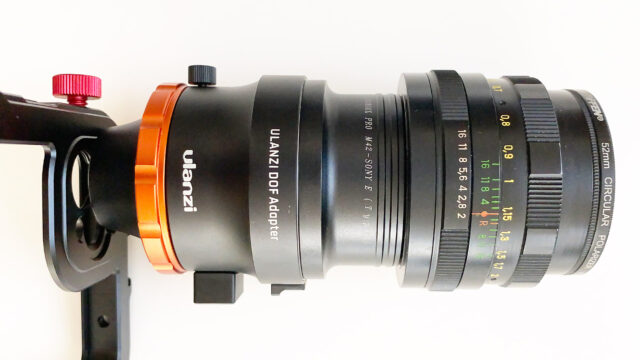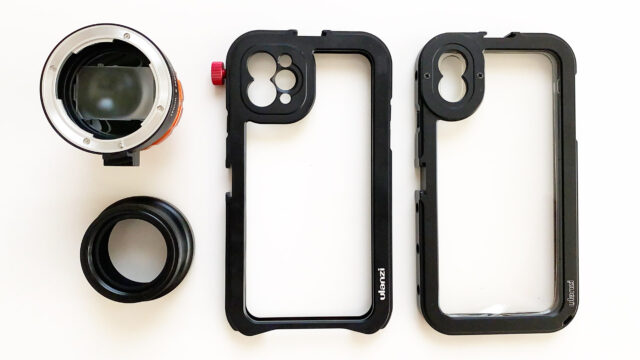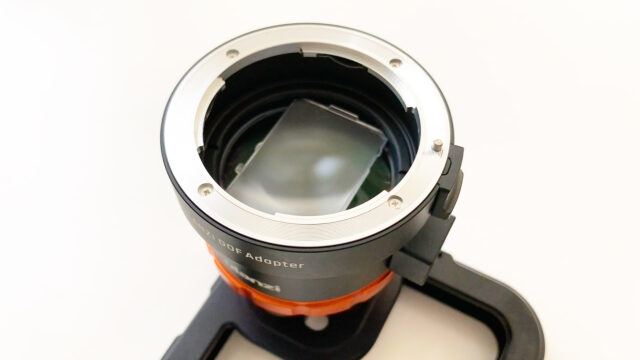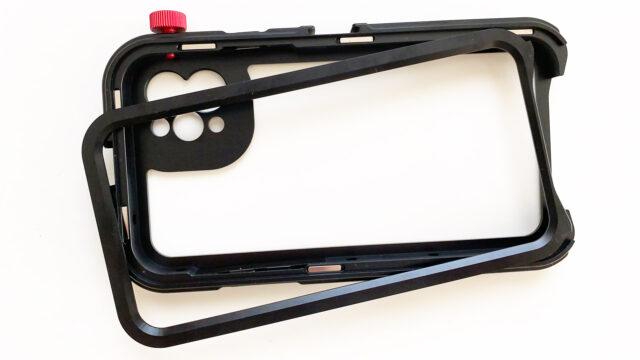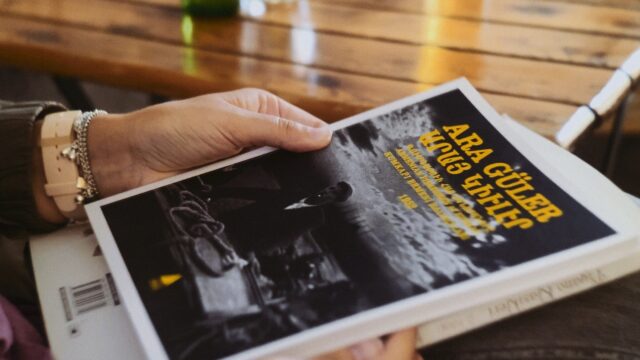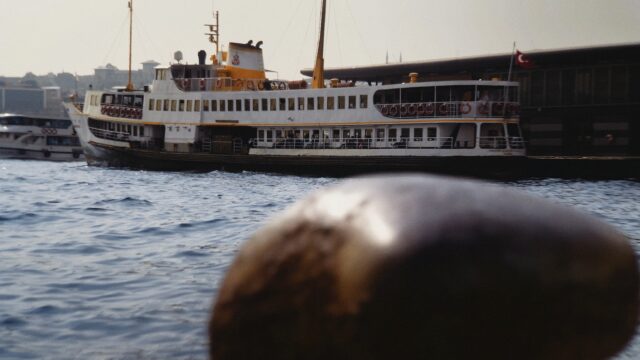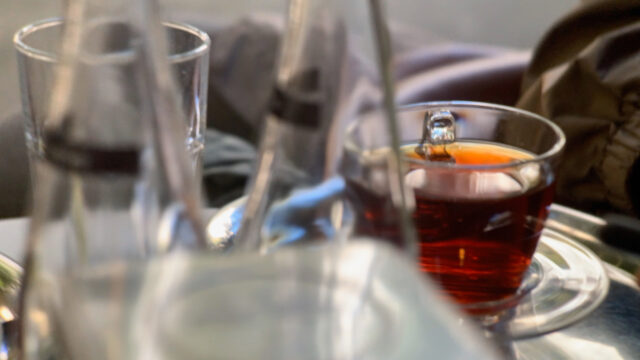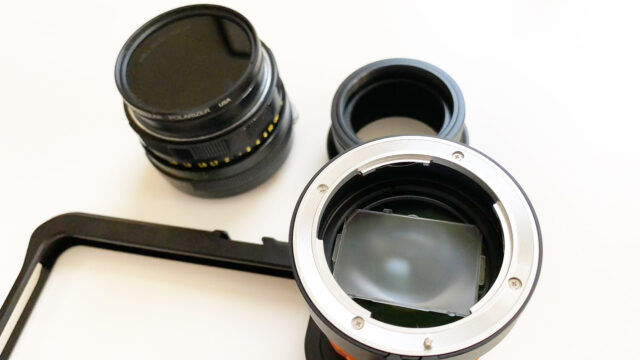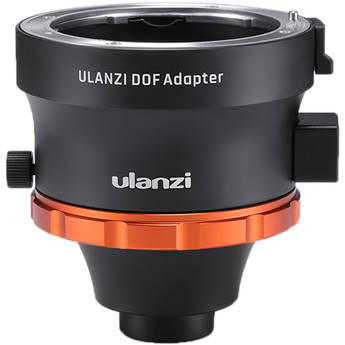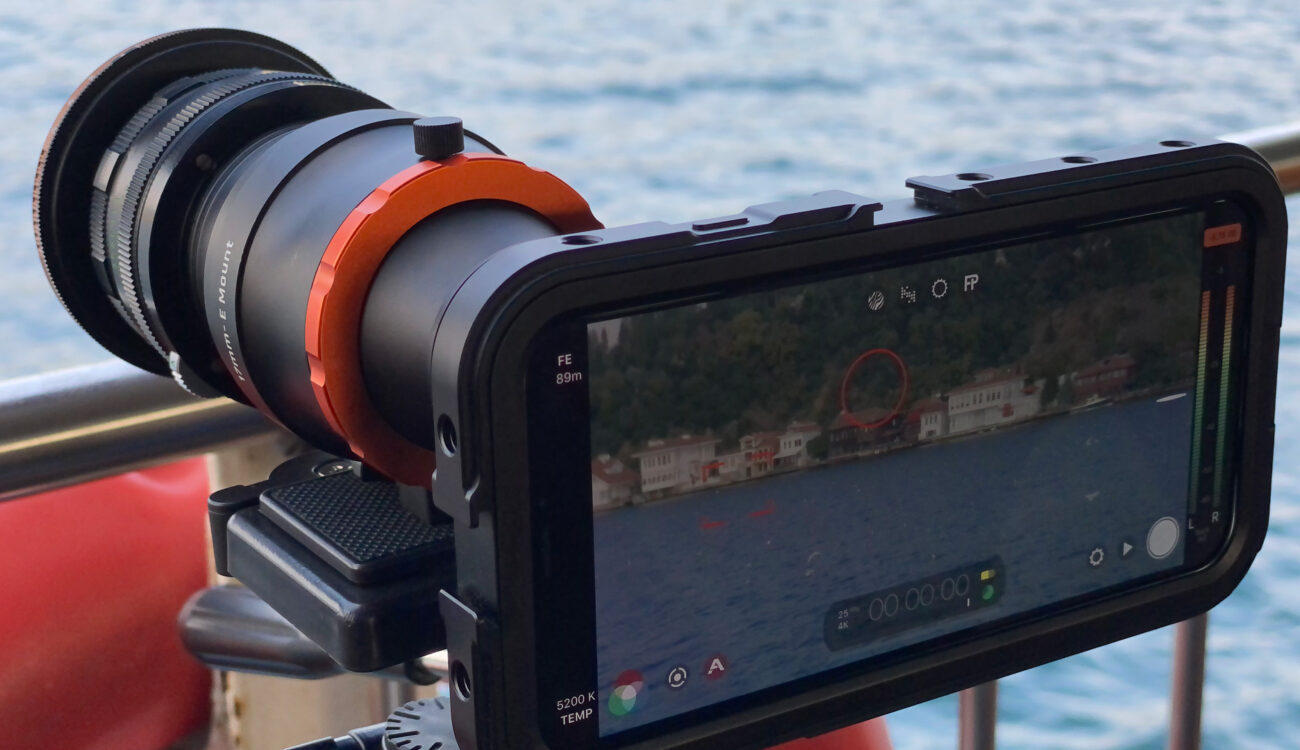
A few weeks ago I wrote up my first impressions of the Ulanzi DOF Adapter. Now you can learn exactly how to use it.
First of all, it’s important for me to state that from the perspective of any professional who is used to a “proper” camera, the thought of using a depth of field adapter for a smartphone comes with a lot of skepticism. Rightly so, because this adapter is not going to give you perfect images no matter how great a lens you have on it.
However, if you are willing to work for it, it is capable of better results than I expected in the right conditions. I want to give you a few practical tips on how to shoot around the limitations and get the best images possible.
Shooting video with a smartphone is all about shooting around limitations. The beautiful and impressive “shot on iPhone” videos that Tim Cook shows off on stage are very carefully put together (watch the recent “Snowbrawl” iPhone short film we reported about). They are indeed shot on iPhone, that much is not a lie, but they are shot extremely carefully, in a similar way that you might carefully and selectively show off only specific features of an unfinished beta software on stage. You purposely avoid things that are broken. Carefully stepping around pitfalls requires knowing where they are.
That’s the secret of great looking smartphone video. Learning what to avoid and actively avoiding it.
Ulanzi DOF Adapter Review
With that idea firmly in mind, read on for my thoughts and tips about getting the best possible images out of the Ulanzi DOF Adapter.
Build Quality (DOF Adapter and Cage)
Compared to the Beastgrip DOF MkII, the cheaper Ulanzi DOF Adapter might be expected to suffer in terms of materials and construction. It’s actually well constructed and is a high-quality all-metal design. While not included with the DOF Adapter (must be bought separately) the metal Ulanzi cage is also very well made, and once the Ulanzi DOF Adapter is threaded onto the cage, it feels solid and reliable. However, you do need to be very careful threading the DOF Adapter onto the cage, as it’s easy to damage the threads.
You will also need to buy an additional lens mount adapter for whatever lens you intend to use. I’m using an M42 to Sony E adapter pictured below along with the cages for both iPhone 11 Pro Max and iPhone XS Max.
Both the DOF Adapter and cage are made from aluminium alloy and are black anodized for a durable and attractive finish.
The quality of machining and all finishes can’t really be faulted, although, on my iPhone XS Max cage, one of the many magnets that holds the lid in place came unglued. It didn’t affect the lid being held strongly enough by the rest of the magnets, but it was disappointing.
The magnetic system works quite well, it’s more than enough to keep the phone in place. The phone fits into a flexible clear plastic cover first which gives it a snug fit and protects the phone surfaces from direct contact with the metal cage.
Ergonomics and Usability
Any DOF Adapter providing a full frame focusing screen is going to be pretty bulky. The Ulanzi isn’t small, but it’s also no bigger than it has to be. In this sense, its bulk is minimal, but once you add a Sony E-mount to (whatever your chosen lens mount) adapter, plus the lens, of course, things get a lot bigger.
With the Ulanzi DOF Adapter threaded to the cage, my Sony E to M42 adapter and Helios 44-2 mounted, the whole setup takes on the size and weight of a larger dedicated camera. This raises the obvious question, why not just shoot with a full frame mirrorless camera and not have any of the optical compromises involved with a DOF Adapter and a smartphone?
It’s a good question, and one I don’t have a good answer to, except that I enjoy the experience of shooting with my iPhone. I like the intuitive on-screen controls for everything at my fingertips. I like the sense I am looking through the camera directly at my scene as if the camera is hardly there. I like the entirely new operational paradigm that has been created with a camera as an app, defined by software and a touchscreen rather than physical buttons, knobs, switches, menus, and hardware.
I like the smartphone camera because it’s evolving and being developed entirely outside of the professional camera industry. I often find myself walking around the big cine and broadcast shows every year thinking that all of it is nothing more than a massive anchor to real innovation. The smartphone camera is free of traditional legacy baggage and expectations of what a camera should be, or how it should operate to be accepted.
However, the DOF Adapter is a bit of an anchor back to the traditional, it forces the use of manual lenses only, so it does get in the way of this new fluid experience, not just ergonomically or physically but functionally as well.
That said, it is currently the only way to achieve real, optical, shallow depth of field with a smartphone camera. No clever computational portrait mode effects can touch a DOF Adapter for video, and I prefer it for photos as well despite a bit of spherical aberration.
Functionality
As a non-native add on for a smartphone, you can expect the combination of bulky DOF Adapter, all manual lens, and your favorite video recording app to take some knocks when it comes to overall functionality. The Ulanzi DOF Adapter does function, as intended and as advertised, but the shooting experience takes a hit.
Stabilization (or lack thereof)
The main two things you lose when using this (or any) DOF Adapter is image stabilization and auto focus. This means you need to be aware that the slightest vibrations, even when on a tripod, may ruin your shot. It is one of the reasons neither the Beastgrip or Ulanzi feature a vibrating or rotating ground glass design like the old camcorder DOF Adapters of the 2000s. Smartphone cameras are very sensitive to micro-vibrations when they are conducted directly to the phone body.
I wasn’t happy with any handheld video I shot with the adapter, and to be honest a lot of the example videos you can see from this adapter online are terrible because shots are handheld.
Manual Lenses
You also need to be prepared for manual focus and aperture. Smartphones don’t have any way to interface with external electronic lenses, so any modern lens with fly-by-wire aperture control or focus will be useless with the DOF Adapter.
So you’ll need to use manual lenses. There are plenty of vintage SLR lenses that are completely mechanical and will work very nicely with the adapter. The advantage of the Sony E mount on the Ulanzi DOF Adapter is that you can then adapt it to almost any lens mount you want, including PL.
Expect Workarounds
The old saying that you can’t get something for nothing definitely applies to shooting video with a smartphone and a DOF Adapter. If you’re looking for an easy plug and play solution that you just snap on, open your video recording app, and magically gives you perfect bokeh, you’ll be disappointed, and I can’t recommend you commit to buying any DOF Adapter if this is your expectation.
You can capture very nice looking videos and photos using the Ulanzi DOF Adapter, but you will have to work for it. Expect to make mistakes, expect to solve problems and find workarounds to using, mounting, stabilizing, and actually capturing your images. This is a tool that requires you to be very proactive if you want to get the best out of it.
Image Quality
The image quality you can expect from the Ulanzi DOF Adapter depends on many variables.
If we set aside the variables such as the lens you are using, and if you have managed to focus the smartphone camera properly on the focusing screen, you are left with one limiting factor, that is the focusing screen itself.
Resolution
The focusing screen inside the adapter is a standard Canon focusing screen. It uses very fine concentric rings like a micro prism to diffuse the light focused on it by the lens into a visible image on the screen. If you shoot a photo using the adapter and zoom in, you can actually make out these rings in the image.
I haven’t been able to see the ring pattern when shooting video, even at 4K resolution but I have found that the resolving power of this focusing screen is much less than 4K. There is no visible difference in image detail recorded at 4K compared to 1080p. The frame below shows the leaves in focus as sharp as they will get using this adapter. You will find that fine detail is often lost completely also.
This doesn’t necessarily make it bad. I actually like the slightly softer feel of the image compared to the razor-sharp 4K we’ve come to expect from smartphones.
Texture
The focusing screen gives the image a definite texture, not entirely unlike film, but not moving of course. This is one of the things I quite like about the adapter. If you add some real scanned film grain in post, you can get a very organic analog feel.
Spherical Aberration
Spherical aberration is caused when the entire image cannot be focused evenly on the focus plane. Light at the edges is focused slightly in front or behind the focusing screen when the center is sharp. This causes an unnatural fall off in focus away from the center of the frame.
In the frame below most of the ferry should be sharp. You can see I focused at the center of the ferry, but the detail at the bow and stern, as well as the roofline of the terminal building, falls off. An object at that distance from the camera should remain in focus in this frame edge to edge especially because I was stopped down a fair bit. The ferry is angled away, but still the edges of the frame show this aberration clearly.
I believe this is an optical issue on the smartphone side of the adapter and is caused by the short distance between the smartphone camera lens and the focusing screen. There is a macro lens element inside the adapter, and this is required to focus the smartphone camera on the focusing screen at this short distance but it seems to be either very difficult or impossible to optically correct this issue.
Instead, you have to accept it, and work around it, which I will talk about more in the tips and below.
Ulanzi DOF Adapter Tips
If you play by a few rules, you can capture a surprisingly good video with the Ulanzi DOF Adapter.
Use a Tripod
The first thing that you need to do is bring a solid video tripod and fluid head. This will give you the rock steady static shots that will look best, and allow you to pan and tilt smoothly.
By all means, experiment handheld, see what works and what doesn’t but I couldn’t capture a single usable shot using the adapter that wasn’t on legs. Maybe you can.
Fast Glass
The Ulanzi DOF Adapter works best with a lot of light. The best way to compose your shots, and hide the spherical aberration is to have good separation of your subject from foreground and background. The whole reason to use the DOF Adapter in the first place is that shallow depth of field, so use wide apertures.
This isn’t to say you have to be all the way open all the time. I stopped down as far as f/5.6 and even f/8 in bright direct sun with great results but this also depends on the focal length of your lens and distance to your subject. The goal is good separation, which I’ll come to next. It’s best to use fast glass, anything at f/1.2 or f/1.4 to f/2 is perfect.
In very bright daylight, you may want to use an ND to keep the shutter speed low. I use the PolarPro VND filters and they work very well to control exposure and shutter speed since that’s your only mode of exposure control in bright light with a smartphone camera.
Careful Composition
The most important tip I can give you is to think carefully about how you compose your shots. Be constantly aware that if you focus on something centrally in your frame, focus won’t be even across the whole image.
Don’t shoot subjects flat across your whole frame, instead shoot at an angle that places something close to the camera and something far away. Build depth in your shot so that objects at the edges of the frame are thrown entirely out of focus on purpose. Play with perspective and layer your shots to get the best looking results.
In the frame below I was focused on the chalk board sign. Towards the center of the frame, it’s sharp but falls off unnaturally toward the right side of the frame. This is the effect of spherical aberration, however, the effect is far less obvious on the left half of the frame because there are layers of other objects in front of, and behind the focal plane that are naturally out of focus.
Shallow depth of field is the whole point, so use that selective focus to bring attention to your subject while making sure anything towards the edges of the frame is either much further in front or behind the focal plane and out of focus.
In the frame above, you can’t notice spherical aberration at all because there are plenty of objects layered into the shot to hide it completely.
Conclusions
The Ulanzi DOF Adapter is a capable tool for anyone willing to put in the work. It requires a proactive, thoughtful approach to creating images, and won’t passively give you great looking full frame results by itself.
I recommend it to anyone wanting to experiment with methods and tools beyond point and shoot smartphone videography. However, be ready to problem solve and shoot around the limitations I’ve outlined.
It is capable of producing some nice looking video that denies its smartphone origins in the right hands but isn’t for everyone. If you’re not interested in putting in the hard work, it’s probably not for you.
What do you think about using a DOF Adapter on a smartphone? Is this a tool that sparks your interest? Let us know in the comments.
